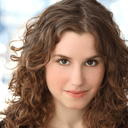Stay in the Loop
BSR publishes on a weekly schedule, with an email newsletter every Wednesday and Thursday morning. There’s no paywall, and subscribing is always free.
Aren't we all neighbors?
National Museum of American Jewish History's 'OPEN Project,' by JJ Tiziou

When I walked into the National Museum of American Jewish History (NMAJH) to see photographer JJ Tiziou’s OPEN for Interpretation exhibition, I expected to be emotionally affected and to feel connected to my surroundings. I am a Jewish woman, after all. But one of Tiziou’s handwritten letters (part of his installation) caught my eye. In it, he recalls one of his favorite photographs, one he admits he will never be able to capture with a camera himself — a shot of Earth seen from the moon. Tiziou then asks, “Seen from there, where are the borders? Who are the strangers? Aren’t we all neighbors?”
The community organizer and artist uses a social lens in his art to open up the world of the museum, arguing that it is not just for a select few; it is limitless in its accessibility. He says in “A Confession and an Invitation” (another letter in the windows of the building facing Market Street), “Sure it’s about Jews in America…but it’s also about immigration, about how we make a home, how we decide which traditions to hold onto and which to evolve. It’s about civil rights and it’s about current events.”
Playing hide and seek
NMAJH invited Tiziou to be an artist-in-residence as part of their OPEN for Interpretation program, following Keir Johnston and Ernel Martinez’s 2013 textile instillation, Hemmed Up, and Andrew Nelson and Martha Graham Cracker’s 2014 cabaret and audio tour of the museum. The OPEN project's aim is one of expansion. They bring in “creative thinkers” like Tiziou to survey NMAJH, so they may draw inspiration from the journey of U.S. Jews and make connections to the universal American experience.
Tiziou spent time exploring the NMAJH to uncover his personal associations with the jam-packed galleries within, which manifested in a delightful and engaging exhibition that spans every floor. His inquisitive presence is felt throughout, asking museumgoers to consider aspects of NMAJH that are usually missed. A treasure hunt of an installation, Tiziou’s project brings viewers to hidden corners and stairwells, as well as drawing them into the museum’s permanent displays.
Depending on which floor of the labyrinthine museum you tackle first, you’ll find elements of Tiziou’s work affixed to the various walls as if they were there all along. Pay careful attention though; the pieces are so congruous with the regular exhibitions that you could breeze right by one without realizing it is there.
The project is as multifaceted as the museum that houses it, with framed handwritten letters by Tiziou addressed to viewers as “Dear friend.” Photographic “interventions” are hung throughout the museum's core exhibition, inspired by themes of housing, activism, religion, and more.
It is an interactive experience as well. Tiziou welcomes attendees to write their own letters to loved ones at letter-writing stations. In addition, the interventions ask socially relevant questions designed to encourage individual reflection and participation, such as, “Should our cities be required to provide safe, quality schools for all their residents?”
Viewing the past and future
The most prominent fixtures of Tiziou’s exhibition, his “Faces of Migration” photographs, appear on the museum’s concourse level. Individual portraits combine to create a sea of diversity. Each person is photographed in front of the same red background, hinting that their unique selves are joined by shared knowledge. And they are; every person told Tiziou stories about migration or displacement, either through their own experience or the experiences of previous generations of family members. The installation itself does not include these stories — though they are available in an easily overlooked booklet found on the concourse level near the mural — but it does not suffer from their absence. The photographs are enthralling on their own.
Another special aspect of “Faces”: the subjects were volunteers recruited by Tiziou and the museum from an open call, and the portraits sessions were hosted at various community locations, such Art Sanctuary, the Moffet School, and the Norris Square Senior Center. Museum employees also took part in the joyous opportunity to be photographed and to speak about themselves or their favorite aspects of NMAJH. This was a communal undertaking.
Tiziou smartly blends the seriousness of social activism with the pleasure of person-to-person connection, and it is a joy to see his installations alongside the NMAJH’s permanent collection. The world feels so splintered and out of joint that pieces with an emphasis on community and union feel necessary and timely. Tiziou proves that “individual” does not have to mean “separated,” and that the perception of “otherness” can be eased through common understanding.
What, When, Where
Open for Interpretation. Project by JJ Tiziou. Through August 21, 2016 at the National Museum of American Jewish History, Fifth and Market Sts., Philadelphia. (215) 923-3811 or nmajh.org.
Sign up for our newsletter
All of the week's new articles, all in one place. Sign up for the free weekly BSR newsletters, and don't miss a conversation.

 Alix Rosenfeld
Alix Rosenfeld